The One World Tartarians
The Greatest Civilization
Ever to Be Erased From History
James W. Lee
Chapter 12
Free Travel Anywhere
Flying Machines & Refueling Stations
Connecting to the Ether; Sail Anywhere and Everywhere
The science is not complicated.Water is a conductor electricity as we all know. Nikola Tesla
persona was created to hide the fact that Tartarians had mastered how to use the North Pole’s
negative charge, The Antarctic Circle positive charge and the ions in the Ether, along with the
salt water of the oceans to be able to use free energy on the oceans and seas. The salt in the water
creates the electrolysis to conduct the alternating current needed for any boat to harness Earth’s
magnetricity. Therefore, they had all the power, free power, to light up their boats, run electricity
and sail anywhere they wanted, anytime they wanted.
The Brighton and Rottingdean Seashore Electric Railway was a unique coastline railway in Brighton,
England that ran through the shallow coastal waters of the English Channel between 1896 and
1901. The aim of the railway was to extend the reach of the existing Volk’s Electric Railway eastward. Since the eastern section of coast ran out of seafront, and quickly ended up with cliffs that
were directly against the sea, Volk was confronted with the intimidating and costly prospect of
an expensive project to build the railway extension onto the cliff-face.
• Volk’s solution was instead to build the railway out at sea, with the electrically-powered car built
on four cross-braced stilted legs that kept the passenger section well above sea-level, and to also build a
special alighting-platform at Rottingdean.
The railway itself consisted of two parallel 2 ft 8 1⁄2 in (825 mm) gauge tracks, billed as 18 ft
(5.5 m) gauge, the measurement between the outermost rails. The tracks were laid on concrete
sleepers mortised into the bedrock. The single car used on the railway was a 45 by 22 ft (13.7 by
6.7 m) pier-like building which stood on four 23 ft (7.0 m)-long legs. The car weighed 45 long
tons. Propulsion was by electric motor. It was officially named Pioneer, but many called it Daddy
Long-Legs. Due to regulations then in place, a qualified sea captain was on board at all times, and
the car was provided with lifeboats and other safety measures.
Construction took two years from 1894 to 1896. The railway officially opened November 1896 but
was nearly destroyed by a storm the night of 4 December. Volk immediately set to rebuilding the
railway including the Pioneer, which had been knocked on its side, and it reopened in July 1897.
Rail cars on canals and shores.
Vimana Flying Machines
“Our vision of “prehistory” is terribly inadequate. We have not yet rid our minds from the hold of a
one-and-only God or one-and-only Book, and now a one-and-only Science.” ~ Shri Aurobindo Ghosh
(1872-1950)
The concept of traveling by air using flying machines was popular in ancient India and for
that matter in medieval and modern India much before the invention of modern airplanes by
the Wright brothers. There is ample literary evidence to suggest that in ancient India people
were familiar with the possibility of men flying in aeroplanes to travel long distances or traverse
interstellar spaces. These aeroplanes used mechanical, spiritual and tantric power to fly. In the
ancient literature of Hindus we have detailed descriptions of flying machines that could carry
people from one place to another or one planet to another to conduct wars, participate in religious
ceremonies, rescue someone in trouble or accomplish some adventurous mission.
We have references to the use of incredible spaceships and flying machines in the Indian lore by
gods, demons and people alike. The most ancient of all epics, the Ramayana and the Mahabharata
mention the use of vimanas or special aerial devices in ancient times. These are comparable in
several respects to the spaceships of Hollywood science fiction movies such as Star Trek and
Star Wars. In the Ramayana we have descriptions of a special airplane called Pushpak Vimana.
In Sanskrit, which was the language of communication in the Vedic period, the word “vimana”
means an airplane or flying machine. It is not mere coincidence that the long towers adorning
the Hindu temples are also called vimanas. The word “vimana”, in this context, has a far deeper
spiritual meaning. According to this, vimana is that which is different from or turned away from
the ordinary mind consciousness. It is the higher consciousness pointed towards the heavens,
belonging to the higher realms, and simply indifferent to the mind and the senses. It is of the
higher mental planes, of the gods, where higher energies submit to higher purpose and higher
will. In contrast, the ordinary mind draws us into samsara and renders us into mere two-legged
animals.
Blinded by the illusion it creates, we become earth bound, incapable of flying or moving freely
into the mid (bhuva) and higher (suva) realms. In the form of an elongated tower jutting out
of the face of the earth through the roof of the temple, the vimana thus serves a very important
purpose in the religious world of Hindus. It serves as a strong reminder of our lost worlds and
lost consciousness. The mesmerizing tower filled with colorful figurines of numerous gods and
goddesses, above the ground, away from the humdrum of earthly life, in the air but still reachable,
conveys a symbolic message that before entering the world of gods we need to turn away from
the distractions of the mind and turn inward towards God for our salvation. The Mahabharata
also mentions the use of flying chariots powered by lightning, capable of flying long distances
into the solar system and beyond. There are descriptions of a demon king Salva using a flying
machine to attack Dwaraka, the capital of Madura, and how Lord Krishna fought with him and
destroyed the flying machine. In the epic Srimad Bhagavatam (sixth Canto, Part 3) we come
across the following reference: “One time while King Chitraketu was traveling in outer space on
a brilliantly effulgent airplane given to him by Lord Vishnu, he saw Lord Siva...” “The arrows
released by Lord Siva appeared like fiery beams emanating from the sun globe and covered the
three residential airplanes, which could then no longer be seen.
The Sonara Aero Clubs “California Airship” of 1852
They called themselves the Sonora Aero Club and, over
time, they counted some 60 members, possibly many more.
Their ranks included great characters, such as Peter Mennis,
inventor of the Club’s secret “Lifting Fluid,” later described
as “a rough Man, whit as kind a heart as to be found in
very few living beings,” despite being “addicted to strong
drink”. The Aero Club’s rules: Roughly once a quarter,
each member had to stand before the gathered group and
“thoroughly exercise their jaws” in telling how he would
build an airship.
On one night in 1858, a man by the name of Gustav Freyer
stood to present his invention: the Aero Guarda, an airship
surrounded by a sort of hamster-wheel cage that would
protect its passengers upon landfall. “The majority of the
sightings occurred over 8 months between mid-November,
1896, and the end of April, 1897. There were hundreds of sightings some with thousands of witnesses
each, according to newspaper reports. Every attempt to verify the names of witnesses provided
in newspaper reports has turned up real people. There were more than 1200 newspaper articles
published on the sightings in over 400 papers in 41 states and 6 Canadian provinces.
The first sighting to make the news occurred over Sacramento on November 17. The most
obvious feature was a brilliant electrical light. It was not clear the light was mounted to a
structure, but some saw an egg-shaped craft with four downward-facing propellers. The San
Francisco Call had this image drawn of the craft, based on witness’ descriptions. The object flew
by the city over the course of half an hour and made several changes in course, swaying from
side to side and up and down, like a boat against a rapid current. It was later reported that a
similar light went the opposite direction the following night. The majority of papers dismissed
the sightings, but a few took them seriously. Believers assumed an inventor was testing a new
design and expected him to unveil his craft at any time, but anyone who claimed responsibility,
like the lawyer George Collins, or California’s Attorney General, William Henry Harrison Hart,
later reneged on their claims.
More sightings occurred in Sacramento on November 22. This time, two lights were seen, apparently anchored to the same structure. Again, those who could see it said that it was egg-shaped, and
at least one witness could see moving parts like wings or propellers. Lights were seen in the San
Francisco Bay area as well; witnesses included policemen, streetcar drivers, car barn employees,
their foreman, and a conductor. The mayor of San Francisco vouched for his two servants who
said they’d seen lights as well. In the following days, similar lights were seen from San Jose to
Tacoma, Washington, and even into Western Canada. Sightings continued into December and
fizzled out by the end of the year. No one took credit for them.
Compressed Air Power ~ Trains
150 years ago people were getting around by driving
compressed air powered personal cars, and were boarding
compressed air powered modes of public transportation.
Where did this compressed air technology come from?
It is even more bizarre when you consider that pneumatic
engine ideas were supposedly getting developed as early as
1687. Yup, Denis Papin apparently came up with the idea
of using compressed air in the 17th century. In 1687, Papin
unveiled a new invention to transmit power pneumatically,
in order to develop a means of spreading industrialization
to areas where waterpower was not available. This idea was
hotly opposed in the Royal Society, and Papin left England to
accept a chair of mathematics at the University of Marburg
in Hesse, bordering Hanover. In 1690, Papin published an
historic article in the Acta Eruditorum of Leipsig, “A New
Method of Obtaining Very Great Moving Powers at Small
Cost,” where he proposed using the power of expanding
steam to operate a piston/cylinder engine.
“The first compressed-air carriage of which there is an authentic account was constructed by
two Frenchmen, Andrund and Tessie du Motay, about 1840. As will be seen from the image it
was made for running upon rails; it was adapted to carry eight passengers; had the air stored at
a pressure of 17 atmospheres, while the working pressure in the cylinder was three atmospheres.
These inventors also contemplated the application of compressed air to road carriages; they
proposed to use pressures as high as 60 atmospheres, which were to be attained in stages, and to
heat the air before its admission to the cylinder. They were the first to indicate the necessity of a
reserve supply of air for use in hill-climbing or for other contingencies when the pressure in the
main reservoirs was approaching its lower limit.” In 1844 M. Andraud built a 2-2-2 locomotive
weighing five tons, with a single riveted air tank holding 106 cubic feet of air at 300 psi. It was
first tested on Saturday 21st September 1844 on the Versailles Left Bank track where it covered a
two mile return journey at a speed of between 17 and 20 mph. A 1841 patent reveals that Andraud
and Tessie du Motay were based at No 35, Rue Chabrol, in Paris; this road still exists and lies to
the south-west of the Gare du Nord, where channel tunnel trains from Great Britain terminate.
Compressed Air Trains…no coal or logs needed!
The Compressed Air Car…
No Fuel or Gas Needed….Just Air!
From The Horseless
Age for October 1898:
“In 1895, the Pneumatic
Carriage Company was
organized under the laws
of West Virginia, with
an authorized capital of
$5,000,000, and with offices
at 253 Broadway, New York.
The organizers had been
conducting experiments
with compressed air motors
for street railway service for several years, and naturally turned toward the motor vehicle when it received
its first impetus in America. The president and manager of the company is A. H. Hoadley, who has been
in charge of the experiments at the works of the American Wheelock Engine Company, Worcester, Mass.
The first carriage built by the company was completed in November, 1896. It has seating accommodations for six passengers, weighs 2700 pounds, and will run 20 miles over ordinary good roads on
one charge. A grade of 20 per cent is claimed to be surmountable. The wooden wheels are 30 and
42 inches respectively, and pneumatics of 4 inches diameter render riding as easy as possible. The
motor, of the reciprocating type, weighs 400 pounds and operates at 350 revolutions, when the
carriage is making 15 miles an hour. Ordinary compensating gear and hub steering are employed.
In order to heat and expand the air before it enters the motor, it is surcharged with hot water,
carried in the vehicle in a separate tank and kept at a temperature of 400 degrees Fahrenheit.
Five pounds of water are required for each mile traversed. All the above machinery is spring
supported, to relieve it from the shocks of the road.
How Did they Heat the Huge
Castles, Cathedrals and Homes?
Can you being to imagine how these massive
Tartarian buildings were heated during the
cold winters of Europe and mountain castles?
No fireplace burning logs could possibly heat these
palaces. Instead, they had harnessed energy and
could bring it directly into the entire building
because it was electrified at will and location,
thus providing each room with independent
heat using andirons and the buildings current.
There was placed a metal plate behind the
firebox (or the whole firebox made of metal) and
metal goblet-looking objects. These objects may
be of various size, while the bigger are usually
put near the edges of a fireplace. The function of
metal plates is quite clear – they reflect infrared
rays when fireplace heats up, like an ordinary
fireplace does. The goblets, on the other hand,
have nothing to do with an ordinary fireplace
that heats up from combustion. These goblets are
nothing else than ether capacitors, which amplify
electricity in a conductor, along which they are
put. It turns out that originally these fireplaces
were not designed to burn wood. Their secret
probably lies somewhere else.
Let’s imagine that the fireplace and the roof are connected by metal bonding’s through the
chimney (like in the image). The whole construction becomes one solid conductor, connected
with the metal plate in the firebox. Ether capacitors, put near the fireplace, provoke eddy currents
(Foucault currents) in the metal frame, which transmits them to the metal plate. The buildings
with cymatic windows and portholes, with the help of organs, musical instruments and singing,
emitted a frequency range. These frequencies were then collected by devices designed into the
architecture of all other buildings and converted into DC energy. These frequencies were also
transmitted underground through water and collected with piezoelectric transducers. The real
internet. Piezoelectric transducers generate electricity when subjected to a pressure change. Hydrophones are used to listen to whales speak to each other, sonar.
All life resonates and absorbs frequencies. The Aether was filled with frequencies that created
harmony and reverberated off of the firmament. Levitation would be easy. denied a graceful
existence with comfortable, disease-free cities and clean energy for our homes and businesses.
What we call “fireplaces” could very well have been air vents for the off-gassing that was run
throughout the buildings back then.
Gas Lit Street Lamps
So the story goes…and think about how
the gas had to be distilled and pipelines laid
for lamps to operate throughout the cities
and even inside the cathedrals!
Before electricity became sufficiently
widespread and economical to allow
for general public use, gas was the most
popular method of outdoor and indoor
lighting in cities and suburbs. Early gas
lights were ignited manually, but many later
designs are self-igniting. Baltimore was the
first American city with gas streetlights;
Peale’s Gas Light Company of Baltimore
on February 7, 1817 lit its first street lamp
at Market and Lemon Streets (currently
Baltimore and Holliday Streets). A “thermolampe” using gas distilled from wood was
patented in 1799, whilst German inventor
Friedrich Winzer (Frederick Albert Winsor) was the first person to patent coal-gas lighting in 1804
The first electric street lighting employed arc lamps, initially the ‘Electric candle’, ‘Jablotchkoff candle’ or ‘Yablochkov candle’ developed by a Russian, Pavel Yablochkov, in 1875. This
was a carbon arc lamp employing alternating current, which ensured that both electrodes were
consumed at equal rates. In 1876, the common council of the City of Los Angeles ordered four
arc lights installed in various places in the fledgling town for street lighting. On 30 May 1878, the
first electric street lights in Paris were installed on the avenue de l’Opera and the Place d’Etoile,
around the Arc de Triomphe, to celebrate the opening of the Paris Universal Exposition. In 1881,
to coincide with the Paris International Exposition of Electricity, streetlights were installed on the
major boulevards. The first streets in London lit with the electrical arc lamp were by the Holborn
Viaduct and the Thames Embankment in 1878. More than 4,000 were in use by 1881, though by
then an improved differential arc lamp had been developed by Friedrich von Hefner-Alteneck
of Siemens & Halske. The United States was quick in adopting arc lighting, and by 1890 over
130,000 were in operation in the US, commonly installed in exceptionally tall moonlight towers.
With the development of cheap, reliable and bright incandescent light bulbs at the end of the
19th century, arc lights passed out of use for street lighting, but remained in industrial use longer.
Thomas Edison began serious research into developing a practical incandescent lamp in 1878.
Edison filed his first patent application for “Improvement In Electric Lights” on 14 October 1878.
After many experiments, first with carbon in the early 1880s and then with platinum and other
metals, in the end Edison returned to a carbon filament. The first successful test was on October
22, 1879 and lasted 13.5 hours. Edison continued to improve this design and by 4 November 1879,
filed for a US patent for an electric lamp using “a carbon filament or strip coiled and connected
... to platina contact wires.
Nothing New Under the Sun ~ Robots in 1883
Chapter 13
There Were Giants Among US
A US Supreme Court ruling has forced the
Smithsonian Institution to release classified papers dating from the early 1900’s
that proves the organization was involved in a
major historical cover-up.
The cover-up destroyed evidence showing
giant human remains in the tens of thousands had
been uncovered all across America. The pieces of
evidence were ordered to be destroyed by high level administrators to “protect the mainstream
chronology of human evolution at the time”
according to the court ruling.
The allegations stemming from the American Institution
of Alternative Archeology (AIAA) that the Smithsonian
Institution had destroyed thousands of giant human
remains during the early 1900’s was not taken lightly by
the Smithsonian who responded by suing the organization for defamation and trying to damage the reputation
of the 168-year old institution.
During the court case, new elements were brought to
light as several Smithsonian whistleblowers admitted
to the existence of documents that allegedly proved the
destruction of tens of thousands of human skeletons
reaching between 6 feet and 12 feet in height, a reality
mainstream archeology cannot admit to for different reasons, claims AIAA spokesman, James
Churchward:
“There has been a major cover up by western archaeological institutions since the early 1900’s
to make us believe that America was first colonized by Asian peoples migrating through the
Bering Strait 15,000 years ago, when in fact, there are hundreds of thousands of burial mounds
all over America which the Natives claim were there a long time before them, and that show
traces of a highly developed civilization, complex use of metal alloys and where giant human
skeleton remains are frequently found but still go unreported in the media and news outlets.”
A turning point of the court case was when a 1.3-meter long human femur bone was shown
as evidence in court of the existence of such giant human bones.
The evidence came as a blow to the Smithsonian’s lawyers as the bone had been stolen from
the Smithsonian by one of their high-level curators in the mid-1930’s who had kept the bone all his life and which had admitted on his deathbed in writing of the undercover operations of the
Smithsonian. It is a terrible thing that is being done to the American people,» he wrote in the letter.
The NWO has been hiding the truth about the forefathers and foremothers of humanity,
our ancestors, the giants who roamed the earth as recalled in the Bible and ancient texts of
the world by destroying the evidence.
Romanian Giant Legends
Depending on the region of Romania where the legends come from, there are different names
for giants. In the Boziorul area, giants are known as “tartars” (“tartari”), for example. A number of
unusually tall skeletons have been uncovered at Scaieni, in Buzaului Mountains. For instance,
when locals tried to plant apple trees on a hill, they accidentally discovered humanoid skeletons
of over 2.4 meters (8.2 feet) tall along with pottery fragments in the Skyline of Buzaului Mountain.
Knowing the local legends, people from the area immediately thought about the tartars. One of
these legends even claims that the mountain formation known as the “Pillars of Tainita” (“Stalpii
Tainitei”) had actually been built by these giants of old. In the past, the giants were also credited
for building two large underground halls somewhere beneath the mountain.
The strange formation which can be seen up on Tainita Mountain resembles a set of stone
chairs. As they are found at high altitude and in a highly inaccessible area, locals claim that tartars
built the chairs to sit on when they wanted to gather for council. Another legend from Hateg
Country (“Tara Hategului”), tells the tale of two giantesses who built two cities: one in Deva and
the other on the peak of the Severed Mountain (“Muntele Retezat”) respectively. Upon the end
of the construction, when the giantess from Deva beheld her rival’s city and saw it had turned
out more beautiful, she became envious. In a moment of rage, she threw a plough towards the
mountain citadel - destroying it and severing the top of the mountain at the same time. In this
way, the mountain earned its name, being known ever since as the Severed Mountain. A number
of archaeological discoveries have been made in Giurgiu. Between the years 1940 and 1950,
archaeologists unearthed 80 humanoid skeletons which appeared to be giants. The huge skeletons
measured about four to five meters (13-16 feet) in height. Giant skeletons have been unearthed
in other parts of the country as well. As one example, in October 1989, 20 giant skeletons were
found in Pantelimon – Lebada.
The Arizona Silver Belt, November 16th, 1895 with the headline Prehistoric Egyptian Giants
:”In 1881, when professor Timmerman was engaged in exploring the ruins of an ancient temple
of Isis on the banks of the Nile, 16 miles below Najar Djfard, he opened a row of tombs in which
some prehistoric race of giants had been buried. The smallest skeleton out of some 60 odd, which
were examined during the time Timmerman was excavating at Najar Djfard, measured 7’ 8” in
length and the largest 11’ 1” tall. Memorial tablets were discovered in great numbers, but there
was no record that even hinted that they were in the memory of men of extraordinary size”. A
cemetery called Fag el-Gamous , which means Way of the Water Buffalo, and a nearby pyramid have
been excavated by archaeologists from Brigham Young University for the last 30 years. Many
of the mummies that were discovered date to the time when the Roman or Byzantine Empire
ruled Egypt, from the 1st century to the 7th century AD. “We are fairly certain we have over a million
burials within this cemetery. It’s large, and it’s dense ,” Project Director Kerry Muhlestein, an associate professor in the Department of Ancient Scripture at Brigham Young University, said in a
paper he presented at the Society for the Study of Egyptian Antiquities Scholars Colloquium , which
was held in November 2014 in Toronto. However, it is now thought (as of 2017) that it is more
likely to be tens of thousands of graves. One discovery that never got officially published was
that of a mummy who was more than 7 feet (2 meters) tall. “We once found a male who was over
7 feet tall who was far too tall to fit into the shaft, so they bent him in half and tossed him in.”
The Giant Doorways
next-203s
From Russia With Love
source and more pics from this post can be found at the link below on pages 179-201 on the scroll# here





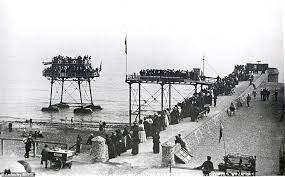














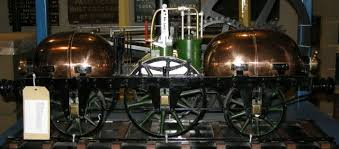
















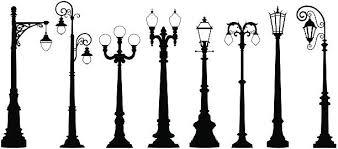
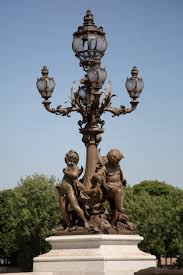

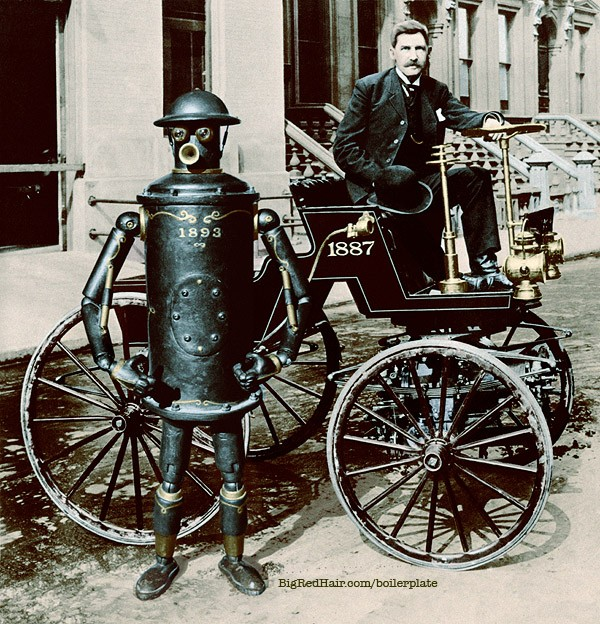
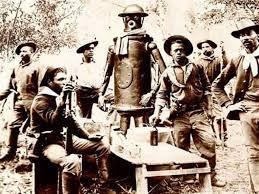














No comments:
Post a Comment